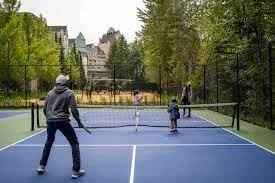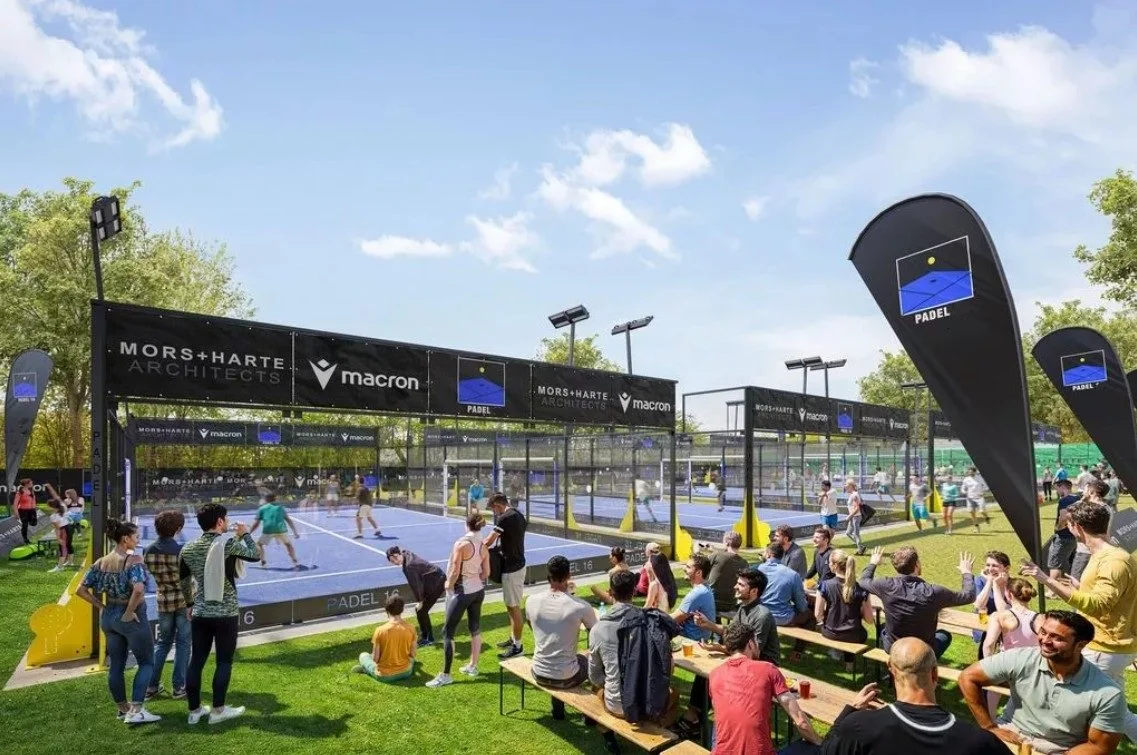
Welcome to
The Padel Court Partnership
By AVF Padel Courts
AVF Padel Courts works in collaboration with sports clubs and land owners to build and operate padel courts, bringing community benefit and generating income.
Introduction to padel
Padel is growing in popularity in the UK, and across the world.
The Lawn Tennis Association (LTA) estimates that the number of regular UK monthly players will increase from 65,000 in 2024 to 200,000 by 2026 and annual padel players from 129,000 to 400,000, although given the current rapid growth in popularity, the number of players could be much higher.
At AVF Padel Courts we share the LTA’s vision to open padel up to more people across the country, with an ambition to grow the sport by making it more accessible, welcoming, enjoyable and inspiring.
We love playing padel but find that most courts are fully booked for weeks in advance, making it difficult to play regularly. This was the inspiration behind creating the Padel Court Partnership.
Many industry commentary sources suggest the UK padel market is still in early adoption mode and could grow significantly as infrastructure (courts, clubs, coaching) expands.
The UK currently has an estimated 1,000 padel courts, which equates to 69,000 people per padel court. By contrast, Sweden has 2,500 people per court and Spain 2,900 people per court.
So there is a significant undersupply of courts to meet the growing demand from padel players in the UK.
Useful links and articles:
What benefits can padel courts bring?
Padel is like a cross between tennis and squash, usually played in doubles, on a 10x20 metre court (a little smaller than a tennis court), with glass walls at each end and fencing to the sides. The rules and scoring are similar to tennis, but the fun really comes as the ball can bounce off the panels and be played like squash.
It is easier to learn than tennis and squash, highly social, with longer rallies and a wide variety of shots. It contributes to health and wellbeing, and community benefit, as it is accessible to all ages, can be played by those with disabilities, promoting activity, inclusivity and social interaction.
For existing sports clubs, padel is likely to be in high demand from current members who have already played, as well as attracting new members and footfall to the club.
For existing uses, such as garden centres, retail parks, hotels or parks, padel courts will increase visibility, bring new visitors and create additional custom.
For developers and house builders, permanent or temporary sports uses (padel is especially attractive because of its social, inclusive and high-energy image) and can transform an empty or derelict site into a destination and boost values.
Pickleball
We can also provide pickleball courts. Pickleball is a fun sport that combines elements of badminton, tennis, and table tennis. Played indoors or outdoors on a badminton-sized court and a slightly modified tennis net. Two or four players use solid paddles made of wood or composite materials to hit a perforated polymer ball, over a net. It is easy to learn and a great introduction to racquet sports for beginners as well as being great fun for experienced tennis and padel players.
Who are AVF Padel Courts?
AVF Padel Courts are part of the AVF Construction and AVF Developments Group.
The AVF Group have over 25 years experience in planning, construction, appraisal, leasing and operational management, with in-house construction contracting, surveying and operations teams.
Partners and clients include sports clubs, schools, universities, local authorities, housing associations and private individuals.
Some of our current projects include:
190 bed new student accommodation development, Greenwich (planning & construction)
9 new build flats in Chislehurst (planning & construction)
32 new flats in Hayes, Bromley (construction and management)
Large detached house, custom build, Keston Park (planning & construction)
Acquisition, planning, construction and ongoing operation of mixed-use, commercial, residential and leisure properties.
We work with an external planning advisor (4tyPlanning) who are experienced in padel court applications, and have achieved planning consent for padel court sites in urban, suburban, brownfield sites, conservation areas and green belt locations.
4TY Planning | Planning Consultants in London, South East, UK
What is the Padel Court Partnership?
The aim of the Padel Court Partnership is to work in collaboration with tennis clubs, sports clubs, housebuilders and other land owners, who have the space and demand from members and the local community who want to play padel, but may not have the capital or expertise to build new courts.
Benefits for the sports club or land owner
We work with sports clubs, land owners with under-used land, and house builders for temporary padel clubs on future development sites.
A padel club can:
Attract new players, boost membership and produce additional revenue for existing sports clubs
Create footfall and activate an otherwise under-used site
Attract hundreds of visitors daily with custom for existing or spin-off businesses
Generate positive perception among locals and the council
Develop a recognisable identity for the area with active, community-led placemaking
Reduce fears about dereliction, anti-social behaviour or vandalism on vacant sites
Generate income and cover holding costs on development sites during planning & pre-construction
Result: added value
A padel club can create income and attract new visitors and members.
For development sites padel courts can enhance land value as a ‘proof of destination’, boosting locations or future residential development as being situated in an already vibrant, used, safe and well-loved area rather than a closed, empty plot. This boosts land values, end-sales values and speeds sales absorption.

How does the Padel Court Partnership work?
We work with the land owner or sports club to carry out a demand study and site assessment.
AVF Padel Courts will undertake the planning application process, funding and construction work to build the courts, so there is no cost to the sports club or land owner.
We have two model options for the operation of the Padel courts:
The Partnership model
The Lease model
The Partnership model
For existing sports clubs, a Partnership model can be the best fit, allowing the club to provide padel to its existing members at a reduced rate, attract new members and generate income for the club via a profit share.
AVF Padel Courts will fund and undertake the planning application and construction of the courts, so there is no cost to the club.
The courts can then be operated by the sports club and available for use by members and pay-to-play guests.
A profit share agreement between AVF Padel courts and the club provides a long-term income to the club generated by use of the courts.
In summary, the Padel Court Partnership provides:
Consultation with the club and members to assess demand
AVF undertake and fund all planning and construction
Padel courts operated by the club for the use of members and pay-to-play guests
Booking system app and website for court bookings, with links from the club website.
A licence agreement on the site
Profit share provides a long-term income to the club.
The Lease model
The lease model is best suited for land owners, for either long-term padel club operation or temporary padel court use.
A lease is agreed been AVF Padel Courts and the land owner, with commencement starting once planning is approved. Lease length can be short-term for development sites or longer term for permanent clubs.
Rent is paid to the land owner either quarterly or monthly.
Site preliminaries, ground works and construction of the courts, operation of the padel club, maintenance of the site, rates and services are covered by AVF Padel Courts.
How the process works
Step 1: Demand study & site assessment
Step 2: Produce a site plan for the layout, planning assessment and financial viability
Step 3: Agree lease terms for the site, usually for a term of 10 years (or 5 years for temporary courts), with rent paid monthly or quarterly to the landowner
Step 4: Planning application
Step 5: Once planning is approved we submit an order for supply of the courts and undertake groundworks for the court foundations, surroundings, access, services and any fencing or club facilities. Recruitment and training for on-site staff and coaches. Our marketing team will implement a marketing strategy, including a dedicated website, social media and direct advertising.
Step 6: Mobilisation. The courts are fitted and tested, the clubhouse, fencing, furniture, landscaping and signage are completed.
Step 7: Operation. The club will have a launch event and be open for bookings and use. We invite local schools, sports teams and youth clubs for ‘come and try’ days. Operational hours will depend on the location and neighbouring properties, but are usually 8am – 10pm.
Planning, court construction & operation
Contact us
Interested in working together? Fill out this form and we will be in touch shortly. We can’t wait to hear from you!











